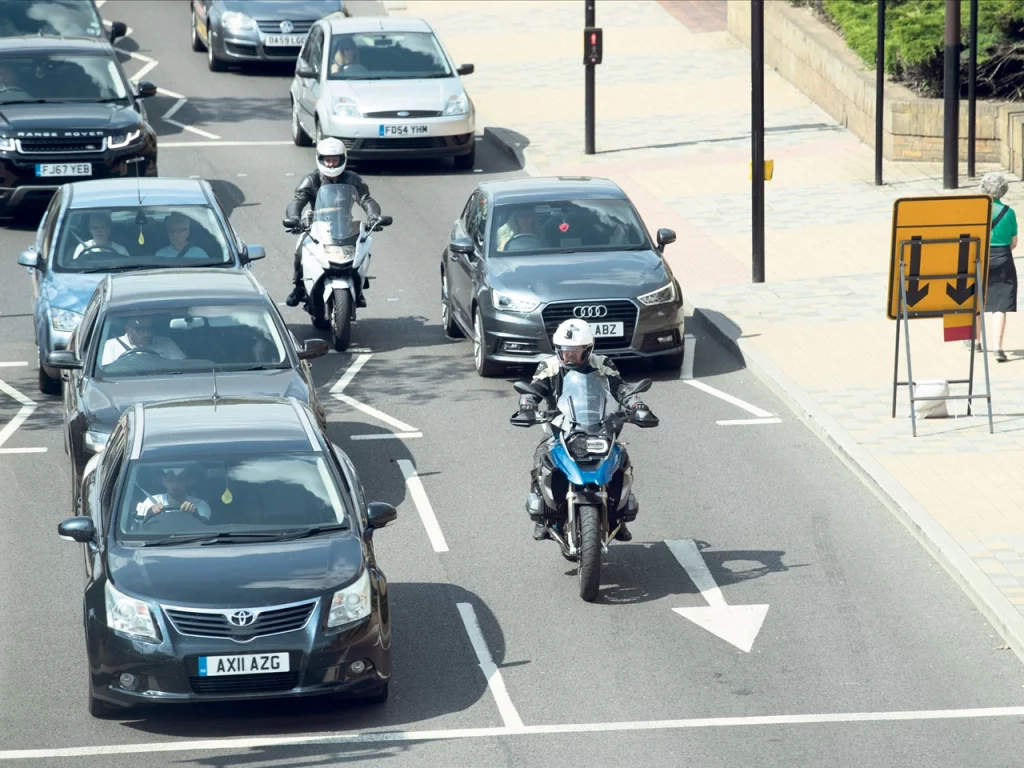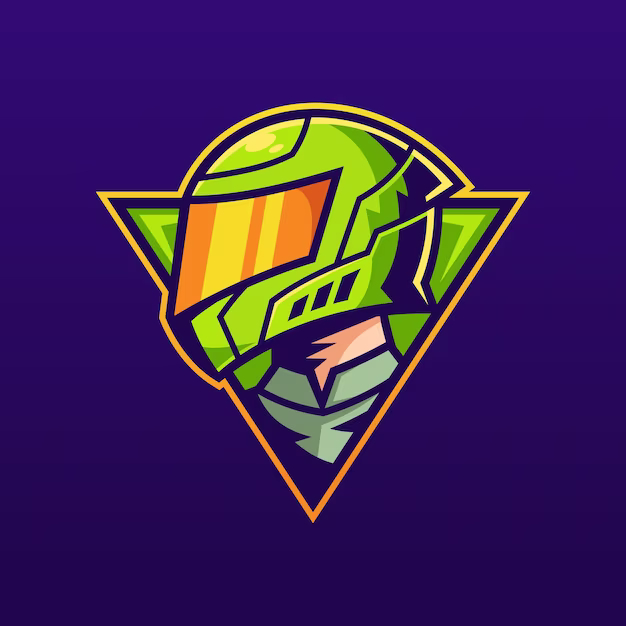One of the biggest perks we riders get on the road is our ability to continue when traffic begins to build up.
There are numerous benefits to safe filtering:
- Saves time and fuel
- Avoids Congestion
- Reduces overall road congestion
- Reduces emissions
- Prevents bike and rider overheating

You’ll also be glad to hear filtering is a legal practice in the UK, and when done with care, it can be a reasonably safe manoeuvre; however, it is not without risk.
There are potential dangers involved, and not all of them blindingly obvious. You should make every effort to reduce your risk of injury or accident and be aware you may be leaving yourself legally vulnerable should an insurance claim need to be made.
Safety Warning: Expect hazards to crop up and, as always ride as if you are invisible –never rely on other drivers to have seen you.
Tips & Techniques:
Observations before moving off
Check your mirrors and do a shoulder check; other motorcyclists may be filtering already.
Look down the road to see if there is enough room for you to navigate between the cars and get back over safely.
Check for debris that may have collected in the centre of the road.
Observations when moving
Continue to monitor the situation once you’ve moved into position.
Look what is happening in front of you and plan your route.
Scan well ahead for safe stopping points and keep an eye out for anything happening behind you, such as another motorcyclist filtering (remember ride your own ride and don’t allow them to pressure you to go faster or do anything dangerous).
Top tips:
- Plan your next safe pull-in spot; for example, pulling in front of a lorry is unwise – it’s less likely they’ll see you.
- Find a natural gap in the traffic and do all observations before moving back over.
- Make your intentions obvious to other road users.
Read the potential hazards
Hazard perception is often forgotten post theory test, but when filtering on a motorcycle, it is an invaluable tool, and you should constantly scan for hazards:
- Is there a patch of gravel collected in the centre of the road?
- Is there a side road someone could emerge from?
- Is a pedestrian approaching a crossing and liable to duck into traffic?
- Is that driver swerving and playing clash of clans on their phone?
- Etc
Speed
Speed is a crucial factor in filtering; it has a profound effect on your ability to react to a developing situation or slam on the anchors to guarantee the safety of you and the shiny parts of your bike.
Don’t exceed a speed that would allow you to stop safely should the situation demand it.
Just because you can doesn’t mean you should
It’s easy to become impatient in traffic, but before filtering, you should honestly weigh up if it’s even worth it. Is it going to pay dividends to filter past 2 cars, given that the light has been red a while and probably about to turn green? Probably not.
While filtering is a great tool to have, using it at every available opportunity is liable to increase your risk of having an accident.
Zig Zags (Pedestrian Crossings)
As previously stated, you can filter on zigzags provided you don’t filter past the car at the head of the traffic. However, this doesn’t make it a good idea as pedestrians are liable to cross between cars at these points, leading to a high risk of a collision.
Ideally, you should avoid filtering on zigzags where possible; however, if you decide to take this on, you should be painfully aware of any pedestrians you or may not be able to see.
Angry drivers/road rage
It’d be nice to say we could all act like civil adults and share the road, but one of the biggest dangers you’ll encounter on the roads is other drivers.
Everyone should be aware of and watch out for angry drivers often peeved at an imagined “queue jump” or some other faulty logic.
I’ve seen all sorts of childish behaviour from drivers as a reaction to motorcyclists filtering (myself and others), such as pulling across the centre lane to prevent progress, shouting, beeping, and even once punching a passing moped rider.
Watch out, be careful, and don’t get involved in any confrontation.
If you feel threatened by a driver’s actions, you should get yourself to safety and report it to the police on the non-emergency line.
Hitting mirrors
I’ve done it; he’s done it, we’ve all done it. If you hit a mirror, stop and talk to the driver to assess the damage and what they want to do. Often there’s no damage, and a simple apology is all that’s needed to resolve the situation amicably.
Bus Lanes
The rules and regulations differ on a region by region basis. We’ve done an article on the main cities with a general outline which attempts to answer the question: Can motorcycles use bus lanes?

Article written by Nige.
Last update: July 2025
Nige has toured most of the UK and Europe, mostly bike camping. From being a child he has gone camping and enjoys being closer to nature.
We may receive a commission if you purchase a product using the affiliate links on any page of this website. This is at no cost to the purchaser, however does support our website and helps us to continue to build with more great content.
